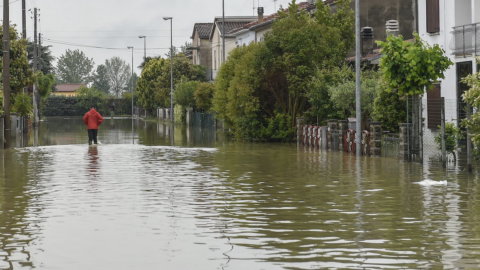In Piedmont there is a land delimited by 11 municipalities, in a strip of region between Liguria and Lombardy: it is the territory of Gavi, the great Piedmontese white wine, of which there are traces as early as 972 and which rises right around the Municipality of Gavi and its Fort, through which – according to what legend has it – also the emperor Federico Barbarossa passed through, in the 1998th century. A white wine in Piedmont, moreover a DOCG label since XNUMX (il protection consortium he turned 20 a few months ago) and among the first GMO-free wines in the world, it is a rather unusual thing, but the explanation lies precisely in that proximity, geographical but also historical and cultural, to Liguria.
The land of Gavi it is in fact only 30 km from the sea, close to those hills that delimit the border with the ancient Republic of Genoa. It is precisely a document preserved in the State Archives of Genoa, and dated June 3, 972, which speaks of the lease by the bishop of Genoa to two citizens of Gavia of vineyards in the Mariana area. Furthermore, the cuisine of the Genoese lords, who had their "country" residence in the fiefdoms of these lands, was based on fish, lean meats and vegetables and went perfectly with the wine which at the time was called Cortese. From there, hand in hand with the great commercial vocation of the Ligurian port, the prestige of a wine that was already exported in the XNUMXth century to South America, particularly Argentina, was built over the centuries.
Even today the Gavi DOCG, available in 5 types (still, sparkling, sparkling, reserve and classic method sparkling reserve), is known and appreciated above all on the international market, where it is among the first Italian whites in the top-premium range especially in England, the United States, Russia and Japan. These countries, together with Germany, absorb a large part of the production, of which more than 85% is destined for foreign countries and appreciated by great chefs such as Jamie Oliver and Gordon Ramsey and by the former American president Barack Obama. However, the bond with Liguria and the sea is not only geographical and historical, but determines its very essence. In fact, Gavi is a land of hills and mountains, but where you can already smell the scents of the Mediterranean, which arrive with the sea breezes.
It is the encounter between the marine wind that blows from the Ligurian Sea and the snow of the Apennines that makes the terroir, made of marly, calcareous and clayey soils which give the Piedmontese white that dry, almost brackish imprint, while the cold processing makes it unusually (for a white) storable over the years, favoring its sparkling process and its combination with any type of cuisine. In fact, if Gavi was born for the typical Ligurian seafood cuisine (and pesto, focaccia and farinata are still common today), more recently that land has become known for the origin of filled pasta, for the precision of the dumpling.
History links the origin of this pasta to the Raviolo family, who lived in these lands whose recipe is today jealously protected by an Order of Knights which has been committed to its promotion for over 40 years. Gaviese ravioli is traditionally prepared with beef and pork, eggs, cheese, borage and escarole. It comes with a thin and tasty pastry and can be tasted mainly in 3 ways: by the "touch", the local meat sauce, in a bowl with wine and "bare ass", i.e. only foamed, without condiments.
Last but not least, Gavi also has solid numbers: the denomination of Gavi DOCG covers a total area of about 1500 hectares, has about 440 companies including producers, winemakers and bottlers, 193 members it employs 5000 people in the entire supply chain for a total of approximately 60 million in turnover to distributors (on trade). In the last 10 years, production has witnessed a constant increase: +41% from 1.076 cultivated hectares to 1.510, +62% from 8 to over 12 million bottles sold, and precisely 85% of production destined for export. The 2018 harvest settled on over 140.000 quintals of grapes and almost 100 hectoliters of wine produced, an improvement compared to 2017, where the hot and dry climate had penalized the activity.




